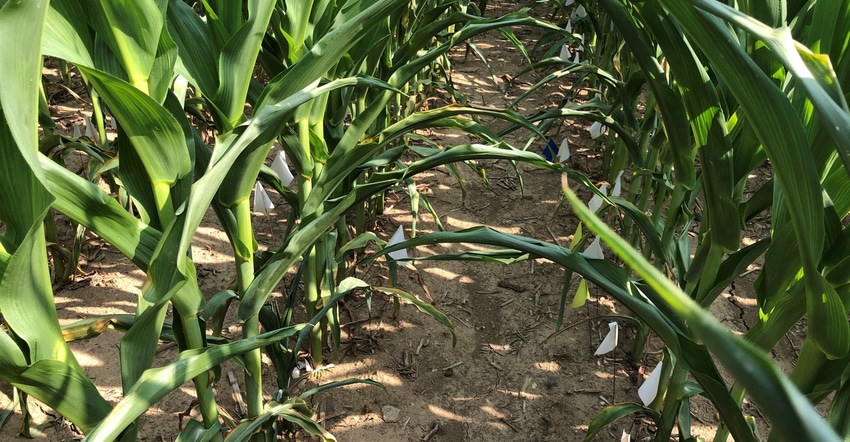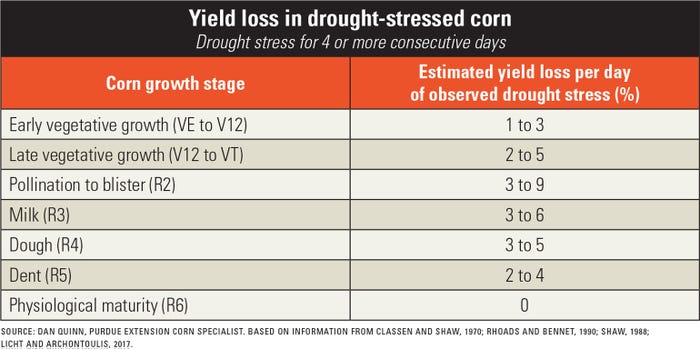October 27, 2022

Probably the biggest culprit as to why corn yields in certain fields across the Midwest are “just average” or “not as good as hoped” in 2022 was the hot, dry weather that persisted in June and July.
For example, Tippecanoe County, Ind., only experienced 1.2 inches of rainfall in June — 75% below the 30-year average. Therefore, it’s important to assess and understand how hot, dry weather can impact a corn plant, specifically at different stages of growth.
Related: Heat, drought stress impacts corn in 2022
Fortunately, corn originated from a tropical grass and has withstood temperatures upward of 112 degrees F for short periods. However, plant growth typically decreases when temperatures exceed 95 degrees F. Therefore, temperatures in the mid-90s during the afternoon typically do not impact corn photosynthetic capacity and yield — if soil moisture is adequate, that is. In 2022, that was a huge “if.” Many areas were hot and dry at the same time.
Overall, young corn in vegetative growth stages is fairly tolerant to high temperatures and drought. In addition, dry soil conditions early in the season can encourage deeper rooting, which will likely assist the corn plant with moisture access later if dry conditions persist or return.
The combination of hot, sunny days and increased drought stress in corn can limit total water uptake and size of growing plants, reducing photosynthesis. Symptoms of drought stress include leaf rolling, which is due to plants closing leaf stomates to limit transpiration of moisture through plants.
Although the attempt to limit transpiration can help a stressed corn plant, stomates closed for a prolonged period can limit plant photosynthesis due to reduced carbon dioxide accumulation. Severely drought-stressed plants start to turn gray, indicating a severe reduction in photosynthesis.
When stress matters most
The earlier leaf rolling occurs in the day and the longer it’s observed, the more stress the plant is under, and the more potential yield loss can occur. Yield loss estimates have been previously quantified when drought stress and leaf rolling occur for four consecutive days or more.

Significant drought stress during vegetative growth can impact plant development, size, overall plant biomass produced and ear size potential. The potential kernel number per row is more sensitive to environmental stress than kernel row number per ear. In addition, since dry soil conditions limit water uptake, these conditions can also limit nutrient uptake. For example, potassium deficiency is often observed under drought stress conditions.
The bottom line is that many cornfields were stressed at some point in 2022. When they were stressed and for how long played a big role in final yield impacts.
Quinn is a Purdue Extension corn specialist. Email him at [email protected].
You May Also Like




